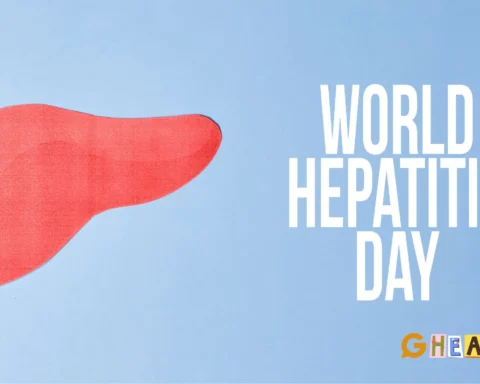In today's world, cities are rapidly transforming into interconnected hubs powered by technology. This trend, known as the "smart city" movement, is revolutionising urban environments around the globe. Slovenia, a captivating European nation renowned for its natural beauty and rich heritage, is also embracing the smart city concept. This article explores the intriguing intersection of smart cities and real estate in Slovenia, examining how advancements in technology are shaping the country's property market and creating exciting opportunities for investors and residents alike.
Table of Contents
Real Estate Market in Slovenia
Slovenia, a Central European country, offers a variety of real estate opportunities, with affordable property prices compared to neighbouring countries. The country's stunning landscapes, including the Julian Alps and Adriatic coast, and charming old houses, castles, and vineyard estates are available for restoration or renovation.
Slovenian real estate - forecast
Property Types
Urban areas like Ljubljana and Maribor offer modern apartments, traditional village houses or contemporary villas are popular, coastal properties near Piran, Portorož, and Izola attract tourists, and rural retreats like farmhouses in Karst or Goriška Brda attract nature lovers.
Investment Potential
Slovenia is gaining attention as an investment destination due to its natural beauty and historic sites, enhanced economic stability due to EU membership, and its cities like Ljubljana and Maribor are embracing smart city initiatives.
Value per residential real estate - Slovenia
Slovenian Real Estates Companies
Slovenia Estates is a licensed agency specialising in property sales and holiday rentals, offering personalised services to buyers, sellers, and investors, assisting in finding holiday homes, investment properties, or permanent residences.
Slovenia has several real estate companies that cater to property buyers and investors. Here are some notable ones:
Slovenia Estates (Novi List d.o.o)
Slovenia Estates is an international agency specialising in property sales, holiday rentals, and property management in Slovenia's popular areas such as Bled, Bohinj, Ljubljana, Maribor, Soca Valley, Kranjska Gora, and coastal regions.
Elite Property Slovenia
Elite Property Slovenia offers real estate in Slovenia's popular locations like Ljubljana, Bled, Bohinj, Soca Valley, Kranjska Gora, Piran, Portorož, and Maribor.
CENTURY 21 Slovenia
CENTURY 21 Slovenia provides a vast array of real estate properties in Slovenia and abroad, offering a comprehensive database of listings for both buyers and investors.
These companies can assist you in finding the right property based on your preferences and investment goals. Whether you're looking for a holiday home, an investment property, or a permanent residence, these agencies can guide you through the process.
Investing in Slovenia Real Estate
Investing in Slovenia real estate offers several compelling reasons, and the country has gained recognition as an attractive investment destination. Here's why:
Emerging Market Appeal: Slovenia's natural beauty, rich cultural heritage, and strategic Central European location have attracted investors. As an EU member, Slovenia enjoys economic stability, legal transparency, and access to European markets.
Affordability and Value: Slovenia offers competitive property prices and high value, with charming properties like historic houses, vineyard estates, and scenic holiday homes available for investors.
Tourism and Rental Income: Slovenia's stunning landscapes attract tourists year-round while owning property in popular tourist areas like Piran, Bled, or Bohinj can generate rental income.
Smart City Initiatives: Ljubljana is implementing smart city concepts, investing in sustainable infrastructure, efficient transportation, and urban development to boost real estate value.
Global Recognition: Slovenia is ranked among the top ten investment destinations globally by the World Bank, indicating its potential for long-term growth and stability.
In summary, Slovenia's real estate market offers a blend of affordability, natural beauty, and investment potential. Whether you're looking for a second home, a rental property, or a long-term investment, Slovenia is worth considering!
Popular Areas for Property Investment in Slovenia
Let us delve into some areas along with their unique features and attractions:
Bled: Lake Bled, a glacial lake with an enchanting island, is a popular destination for visitors. Bled Castle, dating back to the 11th century, offers panoramic views of the lake and surrounding Alps. Traditional wooden boats transport visitors to Bled Island, and the Vintgar Gorge features steep cliffs and a stunning waterfall.
Bohinj: Lake Bohinj, a pristine glacial lake, is a popular destination for nature lovers. Triglav National Park offers hiking and outdoor adventures. Mt. Vogel offers stunning views of the Julian Alps via cable car.
Ljubljana: Ljubljana, Slovenia's capital, is a vibrant city with a rich cultural scene, including the historic Ljubljana Castle, a picturesque riverside promenade, and a vibrant atmosphere with parks, cafes, and green spaces.
Maribor: Maribor, the second-largest city in Croatia, blends history and modernity. Visitors can explore the world's oldest grapevine, enjoy riverside walks, and enjoy skiing and hiking in the nearby Pohorje Mountains.
The Soca Valley: The Soca River offers emerald-green water sports, while Bovec, a charming mountain town, offers rafting, canyoning, and paragliding adventures, while Tolmin Gorges offer narrow gorges and waterfalls.
Kranjska Gora: The Alpine Resort, Lake Jasna, Vršič Pass, and Planica are popular destinations for skiing and hiking, offering crystal-clear waters, scenic drives through the Julian Alps, and the world's highest ski jump.
Coastal Regions: Piran, a charming coastal town with Venetian architecture, is known for its spa resorts and sandy beaches, while Portorož is renowned for its sandy beaches.
Western Slovenia: Explore Karst Region's caves, sinkholes, and Postojna Cave, Goriška Brda's vineyards and wine cellars, and Nova Gorica, an Italian-influenced border town.
Each of these areas offers a unique blend of natural beauty, cultural heritage, and investment potential. Whether you seek a holiday home, a rental property, or a permanent residence, Slovenia has something to offer!
Factors Driving Urbanization
Let's explore the factors driving urbanisation in more detail:
Availability of Job Opportunities
Cities offer economic attraction through job opportunities in finance, technology, healthcare, and manufacturing sectors, higher income potential due to better career prospects, and a diverse range of industries, attracting people from diverse backgrounds.
Improved Infrastructure
Urban areas have well-connected transportation networks, utilities, high-speed internet, healthcare facilities, educational institutions, and recreational spaces. These areas provide reliable access to water, electricity, sanitation, high-speed internet, and mobile networks, as well as access to healthcare facilities, schools, and cultural centres.
Access to Services and Amenities
Urban areas offer convenience, entertainment, culture, social interaction, quality education, and health and wellness through proximity to essential services, entertainment and culture, social interaction, and access to fitness centres, yoga studios, and wellness clinics. The density of people fosters social connections.
In summary, urbanisation is driven by a combination of economic opportunities, infrastructure development, and the allure of diverse services and amenities.
Top Cities for Real Estate Investment
Let's explore the top cities for real estate investment in Slovenia:
Ljubljana: Ljubljana, Slovenia's capital city, is known for its historic charm, vibrant culture, and green spaces. With a population of around 280,000, it offers modern amenities, smart city initiatives, and a thriving real estate market. Key features include the Old Town, Ljubljana Castle, Tivoli Park, and international conferences. Ljubljana also attracts business professionals.
Maribor: Maribor, the second-largest city in Slovenia, offers a blend of history, culture, and natural beauty. Its affordable property prices make it an attractive investment destination, and its dynamic university atmosphere and nearby wine region provide further opportunities.
Celje: Celje, known for its rich history and medieval castle, is attracting investors due to its growing economy and offers a pleasant lifestyle with cultural events and recreational areas.
Kranj: Kranj, a gateway to the Alps, offers stunning views of the Sava River and surrounding mountains, and offers a rich cultural heritage through museums, galleries, and historic sites.
Map of Slovenia with major cities
Novo Mesto: Novo Mesto, a river town along the Krka River, boasts a charming historic center with charming squares and architecture, and is also an industrial hub with potential business opportunities.
Velenje: Velenje is a green city promoting sustainable living, offering recreational areas like Lake Velenje and the Coal Mining Museum for residents and visitors.
Ptuj: Ptuj, Slovenia's oldest town, boasts a rich Roman history, attracts tourists with the Kurentovanje festival, and is situated along the Drava River.
Kamnik: Kamnik, a medieval town with well-preserved architecture, offers outdoor enthusiasts hiking and skiing in the Kamniško-Savinjske Alps, and hosts numerous cultural events and activities.
For someone who is interested in buying real estate in Slovenia, it would be advisable to understand the locality in terms of all aspects including transportation, utilities, open spaces and any future growth plans. Local authority regulations have to be thoroughly studied to ensure the smooth construction of any building.
Legal Requirements for Buying Property in Slovenia
Foreigners are permitted to purchase real estate in Slovenia without any special permits or restrictions. However, there are some legal requirements that must be met before buying property in the country. Here are the key steps and considerations for buying property in Slovenia:
Eligibility: Slovenia follows the reciprocity principle, allowing property purchases in Slovenia from countries that allow Slovenians to do so. This principle is common in many EU countries, but for those outside the EU, local legal advice is recommended for eligibility verification and permit acquisition.
Financing: The Slovenian banking system allows non-residents to apply for loans under specific conditions, requiring sufficient funds or financing before purchasing property.
Legal Steps: To register property in Slovenia, obtain a tax number, sign a purchase agreement with a notary, and register the property with the land registry.
Remember to consult with legal professionals and experts to navigate the process smoothly.
Sustainability Integrated into Real Estate Development
Modern real estate development emphasises sustainability, promoting responsible practices that balance economic, environmental, and social considerations. Let's explore how sustainability is integrated into real estate:
Green Building Design and Construction
Developers use sustainable design principles to reduce resource consumption and environmental impact, incorporating energy-efficient lighting, insulation, renewable energy sources like solar panels, and water-saving fixtures.
Energy Efficiency
Buildings are designed to reduce energy consumption through passive solar design, high-performance insulation, and smart HVAC systems, maximising natural light and heat, reducing heating and cooling needs, and efficiently managing indoor climate.
Materials Selection
Choose sustainable materials like recycled, locally sourced, or low-impact ones, and look for buildings certified by programs like LEED (Leadership in Energy and Environmental Design).
Waste Reduction and Recycling
Developers employ waste management strategies during construction and operation, focusing on minimising construction waste through recycling and reuse, and encouraging recycling and composting for operational waste.
Water Conservation
Low-flow fixtures, rainwater harvesting, and efficient irrigation systems help reduce water usage, while xeriscaping involves planting drought-resistant plants in landscaping.
Transportation and Accessibility
Sustainable developments prioritise public transit, cycling infrastructure, and walkability, while mixed-use developments combine residential, commercial, and recreational spaces to reduce commuting.
Social Sustainability
The plan prioritises community needs and well-being, ensuring affordable housing options for diverse income levels, and providing community spaces like parks, green areas, and recreational facilities.
Lifecycle Assessment
The process involves assessing a building's environmental impact throughout its lifecycle, evaluating emissions from construction materials, and monitoring energy use during occupancy.
Resilience and Adaptation
Sustainable buildings are designed to withstand climate change impacts, such as extreme weather events and rising sea levels, with green roofs enhancing insulation and managing stormwater.
Certifications and Standards
LEED: Leadership in Energy and Environmental Design.
BREEAM: Building Research Establishment Environmental Assessment Method.
WELL: Focused on occupant health and well-being.
Overview of a Smart City
A smart city is an urban area that uses technology and data collection to improve residents' quality of life and city efficiency, utilising ICT and IoT to create a sustainable, connected, and responsive urban environment.
Smart cities prioritise their inhabitants, supporting their diverse needs and aspirations. Understanding the reasons people choose a city, such as economic opportunities, cultural richness, and education, is crucial, as these factors evolve over time and vary among different communities within the city.
Cities are a hub of diverse cultures, languages, and traditions, attracting visitors through arts, museums, theaters, festivals, and culinary experiences. This diversity fosters creativity, tolerance, and social cohesion. UNESCO's report emphasizes the importance of integrating culture into urban planning and development for prosperity, safety, and sustainability.
Liveability, economic ability, and sustainability are key aspects of a sustainable lifestyle, focusing on improving public services, fostering economic growth, and balancing environmental concerns.
In summary, smart cities strive to create a harmonious blend of technology, citizen well-being, and efficient urban management.
Principles of Smart Cities
The concept of smart cities encompasses several dimensions and principles. Let's explore them:
Smart City Dimensions: Smart cities aim to improve urban living through technology and innovation. They focus on the Smart Economy, Smart Mobility, Smart Environment, Smart People, Smart Living, and Smart Governance. Smart Cities foster economic growth, entrepreneurship, and digital innovation, while Smart Mobility promotes efficient transportation systems, environmental sustainability, and clean energy. Smart People empower citizens with digital literacy, education, and information access, while Smart Living enhances quality of life through smart homes, healthcare, and community services.
Design Principles for Smart Cities: Smart city design principles include prioritising urban life over technology and infrastructure, demonstrating sustainability, scalability, and resilience, and ensuring flexibility for long-term adaptability, despite not being universally agreed upon.
Smart Cities in Practice: Smart cities utilise digital technologies, urban planning strategies, and public-private partnerships to enhance lives and prioritise people in addressing urban challenges.
Remember, smart cities are dynamic and continually evolving, adapting to the needs of their residents and the changing urban landscape.
Smart City Initiatives in Slovenia
Slovenia has been actively involved in smart city initiatives, aiming to enhance sustainability, innovation, and quality of life. Here are some key points:
Slovenia's Smart Specialisation Strategy (S4) outlines national development priorities, promotes stakeholder cooperation, integrates Slovenia into global networks, and encourages cluster-based economic development through Strategic Research and Innovation Partnerships.
Slovenia's cities Ljubljana, Kranj, and Velenje are part of the European Commission's goal to achieve 100 climate-neutral and smart cities by 2030. Slovenia is experimenting with smart village concepts in tourism, mobility, and innovation. Ljubljana is known for its visionary leadership, citizen engagement, and commitment to the circular economy. Slovenia continues to contribute to EU initiatives on smart cities, data, AI, and interoperability.
Smart Cities in Slovenia
Ljubljana: Slovenia's capital, Ljubljana, is a smart, green, and sustainable city, renowned for its visionary leadership and commitment to quality of life. The city celebrates the 150th anniversary of architect Jože Plečnik, whose work shaped its unique urban landscape. Despite historical challenges, Ljubljana has preserved its culture and language.
Ljubljana is a successful smart city that engages citizens in co-creating urban solutions through traditional channels and interactive platforms. Participation in European projects drives innovation and sustainability. Smart solutions implemented include environmental monitoring, circular economy initiatives, innovative mobility, traffic management, smart tourism, energy efficiency, shared public spaces, and award-winning public spaces. Ljubljana promotes resource efficiency, waste reduction, and sustainable tourism through bicycle and electric vehicle sharing, sustainable tourism, and pedestrian-friendly streets. Real-time data optimises traffic flow and enhances visitor experiences.
Mission for 100 Climate-Neutral and Smart Cities: Slovenian cities Ljubljana, Kranj, and Velenje are part of the European Commission's mission to achieve climate neutrality by 2030 through smart city transformations.
Smart Villages and Innovation: Slovenia is implementing smart village concepts in sectors like tourism, mobility, and innovation, with successful pilot practices showcasing its commitment to rural development.
Slovenia's Smart Country Solutions: Slovenia is actively participating in EU initiatives focused on smart cities, data, AI, and interoperability, with a goal to become a digital leader in smart urban development.
In summary, Slovenia's smart cities blend tradition, innovation, and citizen engagement to create sustainable, resilient, and vibrant urban spaces.
Challenges Faced by Smart Cities in Slovenia
Smart cities in Slovenia face several challenges as they strive to integrate technology, sustainability, and efficient urban planning. Let's explore some of these challenges:
Smart cities necessitate the seamless integration of various grids and storage systems for optimal functioning, requiring efficient communication and coordination. Smart building management systems, integrating appliances and meters, are being implemented to enhance energy efficiency, monitor resource usage, and improve overall building performance.
Smart cities aim to optimise energy production and waste reduction by integrating renewable energy sources like photovoltaic modules, wind turbines, heat pumps, and combined heat and power systems. Slovenia's smaller urban areas face budget constraints for smart solution investments, making it challenging to balance innovation with financial constraints.
Smart city development must balance urbanisation with environmental preservation to ensure the preservation of green spaces, biodiversity, and air quality in growing cities. Smart city solutions require robust cybersecurity measures to protect citizens' data, addressing privacy concerns and ensuring data privacy and security.
Smart cities necessitate active citizen participation, addressing diverse needs and ensuring inclusivity, despite ongoing challenges in promoting participation and inclusivity. Smart technologies can be utilised to retrofit existing infrastructure, but careful planning and investment are necessary for upgrading transportation systems, utilities, and public spaces.
Smart cities necessitate interdisciplinary collaboration among government, businesses, academia, and citizens for successful implementation. Smart cities are encouraged to develop resilient infrastructure and emergency response systems to prepare for extreme weather events, floods, and other natural disasters.
In summary, while Slovenia's smaller urban areas face unique challenges, they also offer opportunities for innovative solutions tailored to their specific contexts.
Addressing Transportation Challenges
Smart cities are actively addressing transportation challenges through innovative solutions. Let's explore some of the key strategies and technologies they are using:
Cities are enhancing public transport systems by integrating Mobility as a Service (MaaS) platforms for seamless travel across various modes using a single ticket or app.
Cities are embracing emerging vehicle technologies like autonomous, connected, electric, shared mobility, and dockless systems to reduce congestion, improve safety, and promote real-time traffic management. These technologies also encourage ride-sharing, bike-sharing, and scooter-sharing services, reducing emissions and offering flexible rentals.
Cities are constructing mobility hubs that connect various transport modes, allowing users to easily switch between them for efficient travel. The implementation of pedestrian-friendly infrastructure, including sidewalks, crosswalks, and cycling lanes, is being aimed at reducing traffic congestion and promoting healthier lifestyles.
Cities are utilising real-time data from sensors, cameras, and mobile apps to optimise traffic flow, predict congestion, and improve safety. Smart traffic management utilises adaptive traffic signals, dynamic lane management, and congestion pricing to effectively manage traffic during peak hours.
Micro-mobility options like e-scooters and bike-sharing are being utilised to bridge the gap between transit stops and final destinations. The aim is to guarantee equitable transportation solutions for all residents, irrespective of their income or location, through affordable fares, accessible stops, and inclusive planning.
PPPs, or Public-Private Partnerships, can accelerate innovation and investment by partnering with private companies to develop and execute smart mobility solutions. The initiative aims to educate citizens about sustainable travel choices, promoting carpooling, off-peak travel, and alternative transportation modes.
Smart cities are utilising technology, data, and collaboration to develop efficient, sustainable, and accessible transportation systems, aiming to enhance urban mobility for all residents.
Conceptual Model for a Circular City
The conceptual model for a circular city in the case study of Maribor, Slovenia¹ aims to address sustainable development challenges. Here are some key points:
Urban Challenges: Cities are vital for sustainable development, yet they consume over 60% of global energy and 75% of the planet's resources, leading to environmental and social issues like solid waste production and greenhouse gas emissions.
Circular City Model: The study presents a conceptual model for a circular city, aiming to minimise waste, promote resource efficiency, and create closed-loop systems, thereby reducing waste generation and effectively recycling resources.
Define-Measure-Analyse-Improve-Control (DMAIC) Tool: The model utilises the DMAIC process, a quality management tool, which comprises five stages: Define, Measure, Analyze, Improve, and Control, to identify and tackle challenges in the circularity transition.
Research Areas: The study identifies 24 key research areas for implementing a circular city, including waste management, resource optimisation, energy efficiency, and sustainable urban planning.
Challenges in Maribor: The Maribor model revealed challenges in monitoring the transition towards circularity, such as infrastructure limitations, policy gaps, and stakeholder engagement difficulties.
Validation and Further Research: The study highlights the need for further research and case studies to validate the model's practicality, highlighting the potential benefits for decision-makers and urban planners from scientific research on city models.
The Maribor circular city model aims to tackle sustainability issues through a holistic approach and DMAIC process, but further research and practical validation are crucial for successful implementation.
Successful Case Studies of Smart City Implementation
Let's explore some successful case studies of smart city implementation:
Smart City Wien (Vienna), Austria: Vienna's smart city initiatives, spanning 415 km² with 50% green space, are a model for neighbouring countries, with a projected population of 2 million by 2025.
Addressing challenges like climate change, limited resources, population growth, slow economic growth, and affordable living is crucial for sustainable development. The country's gross domestic consumption is 40,648 GWh, with 36,793 GWh of final energy consumption, 35% from renewables, and per capita CO2 emissions of approximately 5.5 tons.
The Smart City Wien Framework Strategy aims for improved quality of life and resource efficiency through innovation, setting ambitious climate and energy targets for 2030 and 2050, focusing on renewable energy and alternative transportation.
The project includes Seestadt Aspern, an urban development with 8,500 flats and 20,000 residents, Vienna University of Technology Renovation, a plus-energy office building with energy recovery systems, Social Housing at "Breite Furt" with 700 flats, and the Wooden Skyscraper "Hoho Wien" in Vienna's Urban Lakeside.
Maribor, Slovenia (Conceptual Model for a Circular City)
Maribor serves as a case study for sustainable development, with researchers proposing a circular city model focusing on circular economy principles and exploring the adoption of smart, green practices to enhance sustainability.
While Vienna's example provides valuable insights, Slovenia continues to develop its own smart city initiatives, focusing on innovation, citizen engagement, and sustainable urban planning.
Examples of Smart Parking Solutions in Global Cities
Smart parking solutions have become essential for creating more efficient and sustainable urban environments. Here are some successful examples:
Cleverciti Smart Parking: Cleverciti in Munich, Germany, is a leading provider of advanced smart parking solutions, utilising advanced IoT and AI technologies to detect, monitor, and guide both outdoor and on-street parking.
Benefits: The system offers real-time guidance for available parking spots, maximises return on parking assets, reduces emissions by minimising unnecessary driving, and provides a holistic solution for cities and operators.
Automated Parking Systems: Vertical parking solutions, like Manhattan Valet Parking in Midtown, Manhattan, are essential in densely populated cities like New York and Tokyo, promoting sustainable urbanism and optimising space without human intervention.
Dynamic Pricing Systems: Cities use real-time pricing models to optimise parking usage and reduce congestion, adjusting based on demand and availability.
Reservations and Pre-Booking: Apps and platforms enable users to reserve parking spots in advance, reducing uncertainty and ensuring a spot upon arrival.
Reduced Infrastructure and Environmental Impact: Smart parking minimises unnecessary driving and emissions by directing drivers to available spots, reducing the need for large parking structures.
Enhancing Revenue and Efficiency for Parking Operators: Smart systems enhance revenue collection and operational efficiency, while real-time data aids in efficient parking space management by operators.
Improved Urban Mobility: Efficient parking solutions enhance overall mobility by reducing traffic congestion and improving the arrival experience for both citizens and visitors.
These innovations demonstrate how smart parking can transform the mundane task of finding a parking spot into a seamless aspect of urban life.
Slovenian Actions to Make Better Smart Cities
Slovenia has been making commendable efforts to enhance its cities through sustainable practices and smart urban development. Here are some green principles followed by Slovenian cities that contribute to their overall well-being and environmental consciousness:
Soft Mobility: Slovenian cities are promoting cleaner air and reduced traffic noise through soft mobility initiatives like cycling paths and electric car-sharing systems.
Local Food: Slovenia's local food supply is crucial, with short distances between urban and rural areas allowing residents to enjoy fresh organic produce daily and promote healthy eating habits.
Green Spaces: Slovenian cities are renowned for their abundant green spaces, which promote active leisure, biodiversity, and reduce carbon footprint, easily accessible to residents and visitors.
Clean Environment: Slovenia is implementing various projects to maintain clean cities, reduce waste, explore waste reuse, and protect drinking water sources, ensuring a healthier environment for residents.
Ljubljana – European Green Capital: In 2016, Ljubljana was named European Green Capital, demonstrating high environmental protection standards and sustainable development goals. It serves as an inspiring example for other cities, to implement successful green practices.
Slovenian cities are demonstrating a commitment to green development, responsible tourism, and smart urban solutions, making their efforts commendable for their commitment to creating better, greener cities.
Conclusion
Slovenia's real estate market is a unique blend of affordability, natural beauty, and investment potential. It offers affordable property prices compared to neighbouring countries, stunning landscapes from the Julian Alps to the Adriatic coast, and charming old houses, castles, and vineyard estates for restoration or renovation.
Slovenia's natural beauty and historic sites attract tourists, making holiday rentals a viable option. Smart cities like Ljubljana enhance real estate value. Investors can explore Slovenia's diverse offerings for second homes, rentals, or permanent residences.
While smart cities will be the norm of tomorrow, the issues of innovative solutions for reducing emissions, traffic congestion during events and natural disasters, circular economy, biomimicry in urban planning, and biophilic design have to be resolved. These innovations will create jobs and are capable of achieving smart cities as well as improving the economy.











[…] Slovenia has implemented therapeutic reference pricing schemes, similar to other EU member states, which significantly affect brand-name pharmaceutical producers. This article includes several aspects of the Slovenian pharmaceutical industry that could appear as inherent issues. Yet, these are business opportunities for those who think futuristically. […]
[…] resilience to climate-related hazards through training and capacity-building activities. Climate Smart Cities is an initiative promoting sustainable urban planning and development that incorporates climate […]
[…] made in 2021-2022, the amount of generated e-waste in India accounts for 1.601 million tonnes. Smart city projects and metropolitan cities like Bengaluru, Mumbai, Pune, and Delhi account for 25% of […]